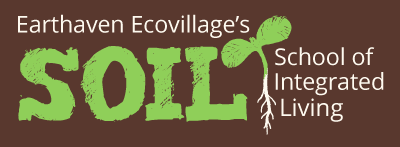Introduction to Natural Building
Explore natural building methods and materials.
Workshop recording
Inspired by the idea of building or remodeling with more natural and sustainable materials but don’t know quite where to start? This workshop is made for you!
The information and images in the workshop will help ground your understanding of natural building so you know what appeals to you and what might be most appropriate for your situation – whether you want to make your own paint for an accent wall or build your own home.
We will explore several “natural building” methods and materials through slides, lectures, and Q&A. We will cover some basics of building so your understanding can grow from a solid foundation — pun intended! Juicy topics, such as building with cob (mud), straw bales, earthbags, and natural paints and plasters will give you perspective on each one so you can compare and combine them in dreaming your projects into reality.
Through examples from around the world, you will gain an appreciation and understanding of what is possible with natural materials. There are no “cookie cutters” here — each place is different and each project reflects our best attempts to balance all our desires with realities.
You will see why aiming for more sustainable lives includes our built environment and contemplate the intangible aspects of using our own bodies and minds to create or remodel our homes to work better, feel better, and BE better with natural materials.
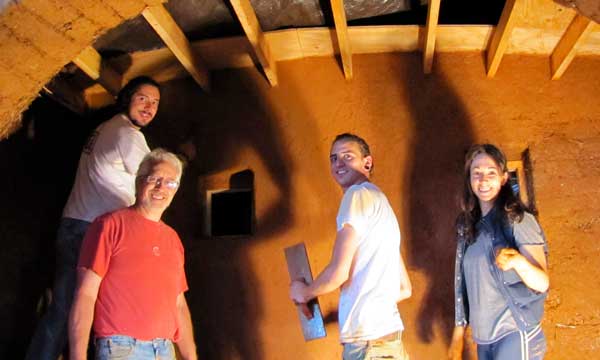
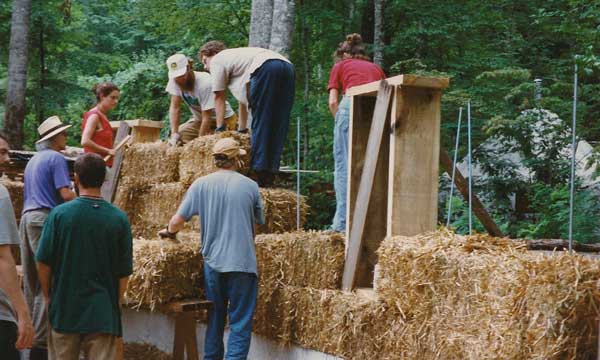
Key Course Outcomes
- Develop a solid understanding of the basics of building.
- Learn what is possible with natural materials.
- Explore natural building techniques so you can compare and combine them in dreaming your projects into reality.
- Contemplate the intangible aspects of using you own body and mind to create or remodel you home to work better, feel better, and BE better with natural materials.
Topics
- Natural Building around the World–Slides
- The Need to Build Better
- Principles and Characteristics of Natural Building
- Regional Appropriateness
- “Sustainability”
- Building Siting, Drainage, Design
- Building Basics, including foundation, roof, structural stability
- Various Materials and Methods (clay, straw, cob, etc)–including slides
- The Continuum of Mud
- Passive Solar Design
- Mass and Insulation
- Siting, Drainage, Building Design as it relates to Natural Materials
- Advantages and Disadvantages of various materials/methods
- Enemies of Buildings – Fire, Insects, etc.
- Permits
- Longevity/Maintenance
- The Intangibles, including community and self-confidence
- The Obstacles
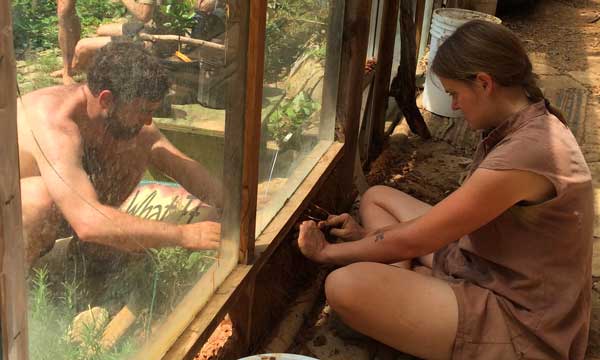
Cost
$185 – 250
Sliding Scale Tuition
Because some people have more financial means than others, we have created a sliding scale fee system to accommodate a range of economic realities. The high-end of the scale reflects the value we believe the program holds, and the low-end offers a more accessible entry point.
By choosing a higher price point, you are helping make the program more accessible to others for whom the low-end may be cost-prohibitive. Please consider your needs and resources to determine what might be a stretch, but not a strain.
Scholarships
We offer 50% scholarships to black, indigenous, and people of color (BIPOC) who otherwise would not be able to afford to attend. We understand that BIPOC experience more financial and institutional barriers to participation, and this is one way we are able to create more access. If you identify as BIPOC and would like to receive a scholarship, please contact us at [email protected].
About the Instructor
Faculty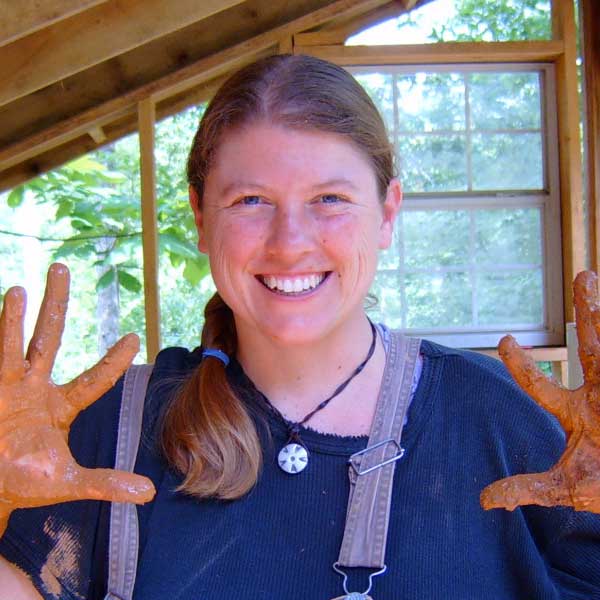
Mollie Curry
Mollie (she/her) moved to Earthaven in 1996, becoming one of the first village residents and getting involved in natural building. She has taught cob, plastering, straw bale, straw-clay, earthen paint, earthbag, and carpentry, as well as permaculture. Being involved in many of the natural building projects at Earthaven, as well as teaching and doing projects in other locations, has informed her building experience.
The Deep Dive Experience
Enjoy five weekly two-hour live online sessions with one of our awesome ecovillagers.
Learn in a dynamic setting with presentations, group discussion, small group activities, and question and answer sessions.
Journey with others on the same path, share experiences, and make connections
Learn from those ahead of you and share with those just getting started. Hear answers to the questions you haven’t thought of yet and learn about the path ahead.
Worksheets and reference materials meet you where you are.
And you always have access to the recordings, worksheets, and reference materials for another source of inspiration.
